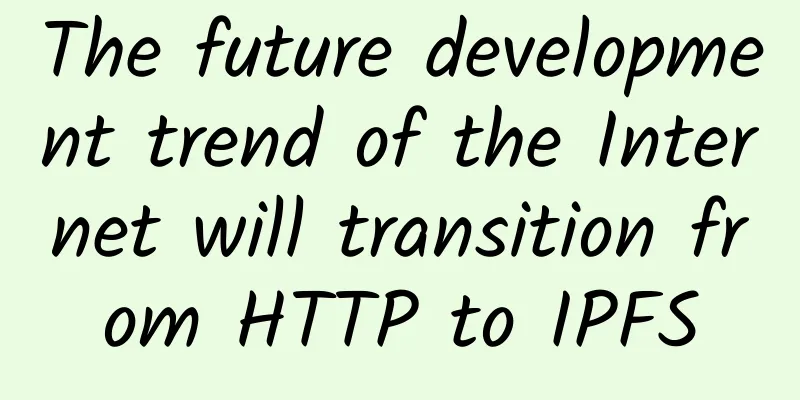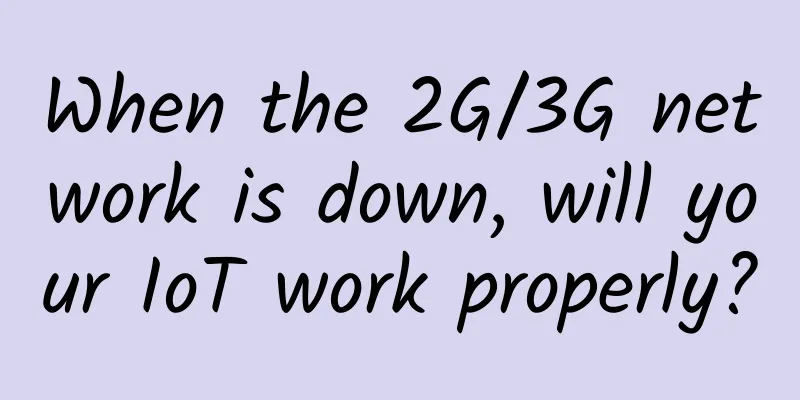5G is coming, opening up unlimited business opportunities

|
Now no one asks "how far are we from 5G" because we are already in it. According to the "2021 China Mobile Economic Development Report" released by GSMA (Global System for Mobile Communications Association), as of January 2021, there are 144 5G commercial networks in 57 countries around the world, and the number of 5G connections has reached about 235 million. China, which is in a leading position in 5G network construction and deployment, has more than 200 million 5G connections, accounting for 87% of the total number of 5G connections in the world. A more important signal is that China's 4G penetration rate declined for the first time in 2020, which indicates that more and more consumers are more interested in turning to 5G services.
5G has broad application prospectsToday's 5G is like a train, moving forward on an established track with an unquestionable attitude. In 2020, China added about 580,000 5G base stations, built 330,000 shared 5G base stations, and built a total of 718,000 5G base stations. According to the timetable given by the Ministry of Industry and Information Technology, 2020 to 2024 will be the period of large-scale construction of 5G networks; 2025 to 2028 will be the period of improvement of 5G network construction; and 2029 will be the beginning of consideration for the introduction of 6G. So the next 7-8 years should be the golden age of 5G. In terms of 5G terminals, the penetration rate of 5G mobile phones is also very fast. The "China Mobile Phone Market Operation Analysis Report in March 2021" released by the China Academy of Information and Communications Technology shows that the shipment of 5G mobile phones in the Chinese domestic market in March this year was 27.498 million, accounting for 76.2% of the mobile phone shipments in the same period; from January to March, the cumulative shipment of 5G mobile phones in the domestic market was 69.846 million, and 64 new models were launched, accounting for 71.3% and 52.5% of 5G mobile phones respectively. Moreover, 5G mobile phones priced below 1,000 yuan have already appeared, which will undoubtedly provide a greater acceleration for the growth of the proportion of 5G mobile phones. Traditional mobile communications based on mobile phones are only one of the many application scenarios involved in 5G. When 5G fully penetrates into all aspects of life and realizes the interconnection of all things, its value can be truly revealed. In response, analysts have given optimistic predictions. Acumen Research and Consulting's latest report "5G Service Market - Global Industry Analysis, Market Size, Opportunities and Forecasts, 2020-2027" predicts that from 2020 to 2027, the global 5G service market is expected to grow at an annual compound growth rate of about 29.7%, and the market size will exceed US$250.3 billion by 2027; China Academy of Information and Communications Technology also predicted the direct contribution of 5G to China's social development in the "White Paper on the Economic and Social Impact of 5G": by 2030, 5G will drive a total output of 6.3 trillion yuan, drive economic added value of 2.9 trillion yuan, and provide 8 million jobs; and in terms of indirect contribution, it is even greater. Who are the applications in the 5G era?However, when we come back to our senses from the exciting data above, we will find that we still have a long way to go to achieve these grand visions. One important reason is that 5G is obviously a "technology-driven" market. In such a market, technology often takes the lead in building a good infrastructure, while the real demand grows with a lag. Which applications that truly belong to the 5G era can finally take root and bear fruit is the key to whether 5G's "boast" can be fulfilled. Recalling 3G and 4G, it was the rise of mobile Internet that quickly consumed their network bandwidth and capabilities. So where is the killer application in the 5G era? To be honest, this is a question that cannot be accurately answered today, but various explorations around this issue have begun. For example, the "5G message" that has been talked about by various operators since the second half of last year is an information service system built on the GSMA RCS UP standard. By introducing MaaP technology, it can realize the multimedia, lightweight and interactive nature of messages. In other words, using the native SMS as an entry point, based on the high bandwidth of 5G, 5G messages can send richer multimedia content including text, pictures, audio and video, geographic location, small programs, service interactions and consumer transactions. For commercial companies, this obviously provides a more direct, more eye-catching and more controllable commercial promotion channel, and its imagination space is undoubtedly huge. From the user's point of view, it is naturally more convenient to watch short videos in SMS or open more multimedia information experiences without opening a specific App. Some people have already started commercial operations with the slogan of "moving Douyin into SMS". In the era of mobile Internet, social apps such as WeChat have taken away the "cheese" of mobile operators' SMS. In the 5G era, whether operators can make a comeback with "5G messages" is something people are waiting to see. However, regardless of whether 5G messages will eventually become popular, the enlightenment it brings to people is more important - how to deeply understand the technical architecture of 5G and reconstruct the business logic and business model that adapts to the 5G era. Whoever runs faster and does better in this regard will have the opportunity to find a stable position in the 5G value chain. In fact, in addition to innovative applications in the consumer market, the application prospects of 5G technology in the enterprise market will be even broader. As the manufacturing industry continues to transform and upgrade towards automation and intelligence, more and more "dark factories" have emerged in China, which is also one of the major applications of 5G empowering the industrial Internet of Things. For example, in the intelligent unmanned factory that produces Xiaomi mobile phones, all work is done by robots, from production management, mechanical processing to packaging, storage and transportation, and full automation and unmanned dark production are achieved. In the workshop of the unmanned factory, the industrial mobile robot - the automatic guided vehicle (AGV) completes the work of handling and loading and unloading. It can travel according to the set guide path, and automatically transport materials between the material storage area and the destination according to the route. The robot arm can complete loading and unloading and various fine operations, and the quality inspection is also completed by the machine vision system. The whole process does not require human participation. The Industrial Internet of Things uses a time-sensitive network and requires precise synchronization of control. Therefore, for the manufacturing industry, 5G not only brings the convenience of wireless connection, but also provides low latency and ultra-reliability services that meet the requirements of the Industrial Internet of Things. The AGV solution provided by Avnet integrates a variety of sensors and path planning algorithms such as machine vision and ToF obstacle avoidance. Through 5G network connection and the use of high-performance cloud computer AI algorithms, it can easily achieve real-time path planning and motion control, as well as seamless cooperation of multiple devices. In addition, the operation process can be adjusted in real time according to business needs to achieve flexible production. 5G power consumption: growing painsAs the scale of 5G network deployment expands, a topic has been mentioned more and more frequently since 2020, that is, "5G energy consumption". Some people even believe that this will be a stumbling block in the future commercial use of 5G. Compared with 4G technology, 5G will indeed consume more power because: From the perspective of the RF system, the 4G base station uses an 8-antenna RRU antenna matrix to achieve 2D MIMO, while the 5G base station uses a 64-antenna AAU antenna matrix to achieve 3D MIMO. After comprehensive evaluation, under the same efficiency, the power consumption of the 5G RF system is twice that of the 4G system. From the perspective of base station deployment, since 5G uses a higher frequency band - to meet the requirements of high bandwidth and Massive MIMO - the coverage area of a single base station will be smaller than that of 4G, which means that to cover the same range, theoretically the number of 5G base stations required is 1.2 to 1.4 times that of 4G. According to estimates, the energy consumption of 5G networks will be 2.4 to 2.8 times that of 4G networks when the above two factors are combined. Converted into electricity bills, taking China's three major operators as an example, the total annual electricity bill expenditure will increase from 50.5 billion yuan to 120 billion to 140 billion yuan after adopting 5G networks. This expenditure is a "sweet burden" that operators must bear before 5G is commercially available on a large scale, which also requires players in the 5G ecosystem to accelerate the pace of energy conservation and emission reduction and large-scale commercial use. But regardless, this is a "growing pain" that will eventually be solved with time. Development Decision: 4G or 5G?On the road to 5G, in addition to operators, users also have "troubles". They must make the right decision on whether to switch from 4G to 5G and when to switch. For ordinary end-consumer users, this is just a change in the number on the phone bill, but for a commercial user who is developing a cellular connection application, this will be related to the entire product life cycle, and it really needs to be carefully considered. However, the good news is that in the upgrade from 4G LTE to 5G, the standard setters and technology developers have already considered this issue. By adopting dynamic spectrum sharing (DSS) technology, operators can allow 4G LTE and 5G to use the same spectrum without having to split the spectrum, and can also flexibly allocate spectrum resources according to usage. This flexibility also means that 4G LTE and 5G will be able to coexist harmoniously for quite a long time in the future, which also means that developers do not have to be too anxious in this important technology transition - for those applications that are willing to try and can pay a high premium, 5G connections can be used, while applications that are more sensitive to cost and technical robustness can still use 4G LTE. In short, on the road to 5G, people are using various methods to eliminate various hesitations, making the most important technology generational change process in the history of wireless communications smoother and allowing more practitioners to find their own new value in this new technology. Unconsciously, we are already on the same road with 5G. |
<<: How to protect remote workers from cyber attacks?
>>: TMR: By 2026, the global smart manufacturing platform market will reach $15.93 billion
Recommend
A brief history of the development of instant messaging (IM)
We are not unfamiliar with instant messaging (IM)...
Priced from 4999 yuan, Huawei Mate40 series goes on sale in China today
On October 30, 2020, in Shanghai, the highly anti...
Current status of Chinese domain names: low application level and potential security risks
Recently, at the Second China Domain Name Develop...
edgeNAT February Promotion: 20% off for monthly VPS and 30% off for annual VPS, with optional data centers in Korea, Hong Kong, and the United States
edgeNAT has released a promotion for February thi...
Top 5 IT Infrastructure Monitoring Tools
All IT departments face this problem - when probl...
Application performance improved by 70%, exploring the implementation principle and implementation path of mPaaS full-link stress testing
Business Background As the mobile development ind...
What are the differences between NB-IoT and LoRa in terms of power consumption of IoT terminals?
To make a comparative analysis between NB-IOT and...
Moving forward amid challenges: A review of the top ten events in the 5G field in 2020
Time flies, and in the blink of an eye, 2020 has ...
WiFi signal is strong but speed is slow? Here’s how to fix it!
The company's wireless WiFi signal is strong,...
Tudcloud: Hong Kong VPS with 20% off for monthly payment and 30% off for half-year payment, with options of large bandwidth or unlimited traffic
Tudcloud has released a year-end discount, offeri...
Telenor launches 5G network in more than 60 locations in Bulgaria
Telecom operator Telenor has officially launched ...
Maxthon Hosting: 20% off on US CN2/Hong Kong CN2/Germany CN2/Netherlands CN2/Hong Kong High Defense VPS
Maxthon Hosting is a long-established foreign VPS...
Why the development of optical communications is not as good as 5G, experts say: each is fighting for its own
At the 2021 China Optical Network Conference whic...
The latest UN report says that 30% of the world's population has never been online
According to a report by the British "Guardi...
By 2025, the 5G core market size will reach US$9.497 million
[[380039]] According to ResearchAndMarkets, the g...









